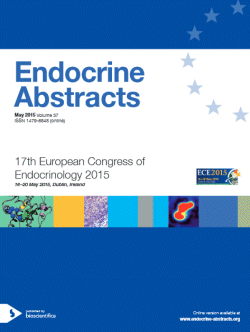Searchable abstracts of presentations at key conferences in endocrinology
Symposia
Advances in phaeochromocytoma diagnosis and management (<emphasis role="italic">Endorsed by the European Journal of Endocrinology</emphasis>)
ea0037s12.1 | Advances in phaeochromocytoma diagnosis and management (<emphasis role="italic">Endorsed by the European Journal of Endocrinology</emphasis>) | ECE2015
Update on genetics of phaeochromocytoma/paraganglioma
Pheochromocytomas (PCC) and paragangliomas (PGL) are rare neuroendocrine tumours, located in the adrenal medulla (PCC) and in the intra-abdominal, thoracic or head and neck paraganglia (PGL). They have the highest heritability of all human neoplasms being a good example of diseases with underlying genetic heterogeneity. In this regard, at least 40% of PCC/PGL patients carry a germline mutation in one of the 16 genes described so far as related to the disease. In addition to th...
ea0037s12.2 | Advances in phaeochromocytoma diagnosis and management (<emphasis role="italic">Endorsed by the European Journal of Endocrinology</emphasis>) | ECE2015
Current imaging of pheochromocytoma/paraganglioma
After establishing a biochemical diagnosis, pheochromocytomas and paragangliomas can be localized using different imaging modalities. Appropriate imaging is critical for primary tumor localization, the detection of multiple primary tumors and the detection of metastases. This will guide the optimal choice between curative surgery and palliative treatment options.First line anatomical imaging modalities for pheochromocytoma and paraganglioma imaging inclu...
ea0037s12.3 | Advances in phaeochromocytoma diagnosis and management (<emphasis role="italic">Endorsed by the European Journal of Endocrinology</emphasis>) | ECE2015
Outcome of adrenal sparing surgery in heritable pheochromocytoma: the example of multiple endocrine neoplasia type 2
With the early management of medullary thyroid carcinoma, multiple endocrine neoplasia type 2 has become an example of chronic disease with prolonged follow-up to look for pheochromocytoma diagnosis and appropriate management. In any genetic disease where pheochromocytoma can happen bilaterally, the surgery has long been based on bilateral adrenalectomy (even in the presence of a single pheochromocytoma), and as a consequence on a life long treatment for adrenal insufficiency....




